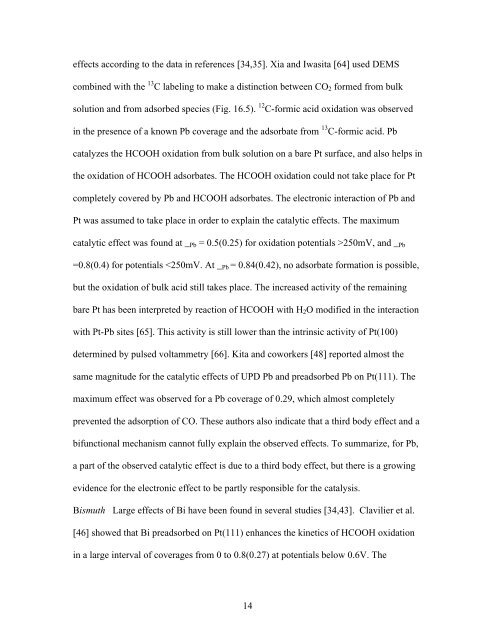electrocatalysis on surfaces modified... - Brookhaven National ...
electrocatalysis on surfaces modified... - Brookhaven National ...
electrocatalysis on surfaces modified... - Brookhaven National ...
You also want an ePaper? Increase the reach of your titles
YUMPU automatically turns print PDFs into web optimized ePapers that Google loves.
effects according to the data in references [34,35]. Xia and Iwasita [64] used DEMS<br />
combined with the 13 C labeling to make a distincti<strong>on</strong> between CO 2 formed from bulk<br />
soluti<strong>on</strong> and from adsorbed species (Fig. 16.5). 12 C-formic acid oxidati<strong>on</strong> was observed<br />
in the presence of a known Pb coverage and the adsorbate from 13 C-formic acid. Pb<br />
catalyzes the HCOOH oxidati<strong>on</strong> from bulk soluti<strong>on</strong> <strong>on</strong> a bare Pt surface, and also helps in<br />
the oxidati<strong>on</strong> of HCOOH adsorbates. The HCOOH oxidati<strong>on</strong> could not take place for Pt<br />
completely covered by Pb and HCOOH adsorbates. The electr<strong>on</strong>ic interacti<strong>on</strong> of Pb and<br />
Pt was assumed to take place in order to explain the catalytic effects. The maximum<br />
catalytic effect was found at _ Pb = 0.5(0.25) for oxidati<strong>on</strong> potentials >250mV, and _ Pb<br />
=0.8(0.4) for potentials
















